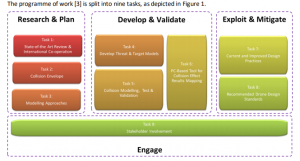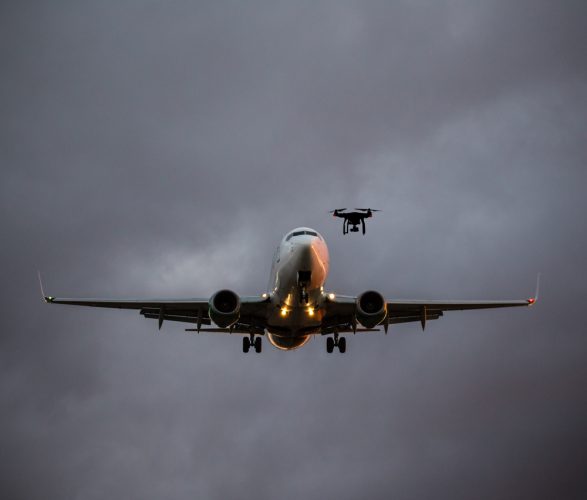UK research agency QinetiQ has completed the first deliverable in the three-year Horizon 2020 programme ‘Vulnerability of Manned Aircraft to Drone Strikes’ for the European Aviation Safety Agency (EASA) Drone Collision Task Force. QinetiQ was awarded a EUR 1.8 million contract in June 2020 complete the following research by June 2023:
- to deepen the understanding — through experimental testing and simulation techniques — regarding the effects of a potential collision of drones in the consumer / prosumer market segment (‘threat’) with manned aircraft (‘target’); a synthesis report on these simulation and experimental activities and obtained results is planned 24 months after project start;
- to identify drone design strategies aimed at containing the risk that drone-aircraft collision may induce on the aircraft and its occupants; and
- to draft design requirements and test standards for future drones to be put on the market within the EU open category (CE marking) addressing the containment of the above risk.
The programme of work, undertaken by QinetiQ, is spilt into nine tasks, relating to research planning, development and validation, exploitation and mitigation, whilst remaining engaged with Stakeholders.

The Task 1 report just published aims to identify the state-of-the-art in drone collision modelling, explore opportunities to cooperate with other studies, and gather data, methods and conclusions that would benefit the ongoing programme. It provides a summary of the state-of-the-art in both drone collision testing and modelling has been provided, and research cooperation opportunities are proposed. Supporting data to aid in future tasks has been extracted from the identified studies and reported.
According to the report, the literature has shown that – with suitable levels of supporting testing – dynamic finite element (FE) analysis methods provide a credible approach to modelling drone collisions. The range of drone masses considered across all of the reviewed literature show the lowest to be the DJI Spark (0.3kg) up to the DJI Inspire (3.4kg). The range of drones identified fits within the requirements of this programme and so most, if not all, results can be exploited in future tasks. The focus in the literature has been mainly on leading edge impacts and, secondary to that, windshields and engine ingestions. Furthermore, data in the literature is mostly associated with collisions against fixed wing manned aircraft. Hence a number of gaps, notably the lack on collisions against rotorcraft, have been identified which will help direct future efforts within the programme.
(Image: Shutterstock)
For more information visit:
https://www.easa.europa.eu/research-projects/vulnerability-manned-aircraft-drone-strikes




